Women farmers connecting for a stronger “we”
Photo courtesy of Renewing the Countryside
While working as a chemist at the North Dakota State Lab in Bismarck in the 1980s, Noreen Thomas fell in love with a farmer. They got married and Thomas moved to her husband’s family farm across the Red River in Moorhead, Minnesota.
Like many women farmers, Thomas quickly took over much of the farm’s critical yet behind the scenes administrative work, from crop insurance to marketing.
“It was like drinking from the firehose trying to learn what farm families grow up in knowing,” Thomas says of the transition. She stepped into a family and a community that took a lot of pride in how things were done, which was largely the same way they had always been done. But Thomas saw things differently. “I saw some of the hazards with using some of the sprays. I was sensitive to them and would get horrible migraines,” she recalls.
So, with her husband Lee, she spearheaded their grain, feed, and bean-focused farm’s ahead-of-its-time transition to organic in 1997, long before it was common. Along with a rotary hoe, she added equipment like a harrow to manage weeds mechanically instead of spraying. Those shifts now are shared with six other farmers, saving the farm and others’ farms—and the land—between 20 and 60 gallons of chemical spray per acre each season. Across her acres, that adds up fast; anywhere from 2,500 gallons to more than 120,000 gallons (combined with other farms) saved in a single year, depending on the crop.
"I wish I would have had a mentor."
— Noreen Thomas, Doubting Thomas Farms
Thomas learned a lot but also wanted more. “I wish I would have had a mentor,” she says. From learning about the USDA and how it works to navigating the maze of contracts that dominate modern farming, Thomas specifically wished she had another woman she could go to with her questions—someone who knew what it was like to be new to the ever-evolving farming industry.
So, in the decades since, Thomas has become the mentor for women and New American farmers she wished she had. She helps them navigate the bureaucracy of the USDA. She goes to the bank with them to help secure loans and helps other farmers go organic.
Thomas may have felt alone as a woman new to farming, but she hardly is. Women are less likely to identify as farmers (even when they are), despite 58% of all U.S. farms having one or more female decision makers. Women farmers, who are more likely to work beginning farms and those with limited resources, have long been underserved and underfunded in their field. But just as long as this has been the case, so has their resilience and ingenuity in the face of it.
As the women in this story show, the experience and perspectives women farmers have gleaned from tackling the unique challenges they face has led them to not only support and help each other, but their communities and the environment, too. Not just because compassion and empathy come naturally to them, but because it makes the most sense.
With funding to the West Central Initiative Foundation made through The Margaret A. Cargill Foundation Fund at The Minneapolis Foundation, Thomas was able to purchase a rotary hoe, a piece of farm equipment that removes weeds without the use of herbicides. Naturally, she uses it for much more than just weeding her Doubting Thomas Farms land. Not only does she share the tool with her community and neighbors, she also uses it to create a safe space for teaching and learning. From questions about when it should be used to which direction it should be used in, “you’re always second guessing yourself. If you have a network around you to support you, you by far will do better,” Thomas says.
The joy of women building community
Jan Joannides, executive director and co-founder of Renewing the Countryside, has cultivated this need for more women farmer networks into a portfolio of programs championing the importance and power of creating welcoming spaces for women to connect, learn and grow. Soil Sisters, for example, began as a grassroots network of women-identifying farmers in Wisconsin who first got together at an informal potluck in 2008.
The original Soil Sisters network in southwest Wisconsin continues to build community through information sharing via a lively listserv and local gatherings—and the model has been adopted in other communities and online. Soil Sisters recently launched a new series called “Women Farmers Aging Strong Learning Circles,” providing body mechanics and health and mental wellness peer-based education for women farmers.

Photo courtesy of Renewing the Countryside
A similarly spirited program is Minnesota Women in Conservation (MNWiC), which supports women in implementing more conservation practices on their land and developing a local community of peers. MNWiC programs use the “learning circle” model, creating unique all-women educational settings encouraging open discussion, questions and story and experience sharing.
“With MNWiC, we’re trying to create spaces where all women feel comfortable, where you don’t have to know all of the language and the lingo, where you can learn together because it’s a safe space where you get support,” Joannides says. These events range from prairie walks and field days to on-line webinars. The “experts” in these gathering are women farmers or women who work at farm-adjacent agencies and organizations.
Funding from The Margaret A. Cargill Foundation Fund at Saint Paul & Minnesota Foundation has allowed Renewing the Countryside to flexibly expand and evolve its women’s programming organically on their terms—a welcome reprieve from the often complex and restrictive government funding such projects are used to, Joannides notes.
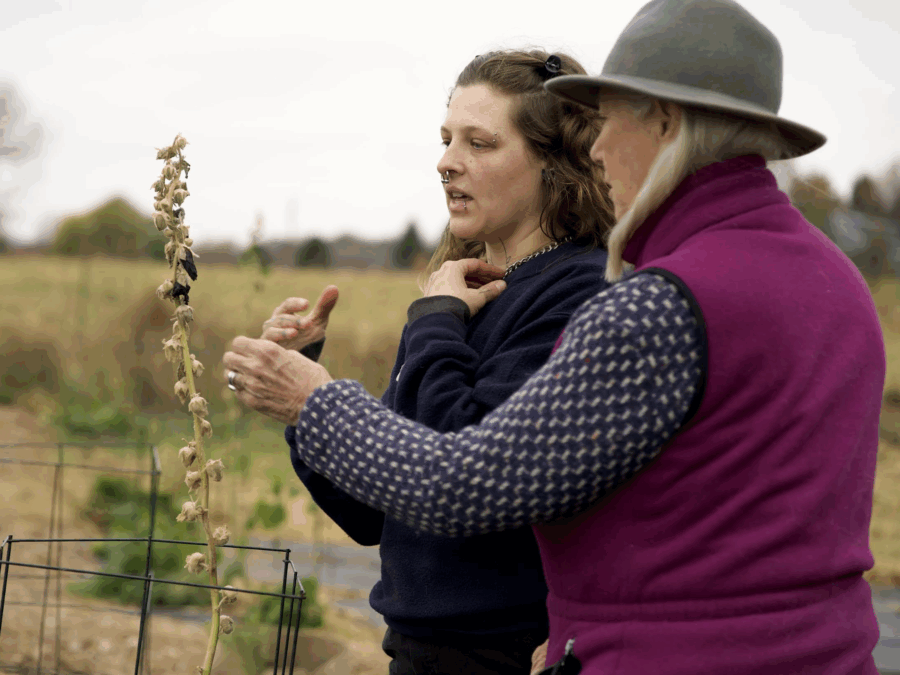
“Having women as speakers and resource people fosters a very approachable setting where attendees feel comfortable asking questions and making connections that last well beyond the events.”
– Jan Joannides, Renewing the Countryside
Caring for communities in crisis
The support that Minnesota Women in Conservation cultivates naturally ripples out across communities. The gatherings bring “people—women in particular—together who tend to be interested in conservation and the environment, but also supporting local food systems, the arts and the community, and having a space for entrepreneurship,” Joannides says. “It develops fertile ground when there’s opportunities, but it also provides a network of community support when times are tough, too.”
This dual purpose is what has led to both the launch of multiple new businesses from Minnesota Women in Conservation meetings, but also the resilience of existing ventures to weather the challenges inevitable in any business and those that stem from farming in a warming climate.
Women farmers care for their communities in more direct ways, too. “We want to make sure that dollars … actually stay in our local community and go to women farmers and Black, Indigenous, and farmers of color—folks who’ve been historically left out of the market side and have been left out of the economic opportunity,” explains Theresa McCormick, executive director of The Good Acre, a Minneapolis-based nonprofit food hub dedicated to unlocking economic opportunities for farmers through market development.
In order to create viable and sustainable economic opportunities for farmers, “we offer wraparound business acceleration to make sure that they’ve got the access to resources and business consulting that make it safer for them to scale,” McCormick says. “We also want to make sure there’s a real access point to real buyers.” The Good Acre does this by serving as the missing link between multiple individual farms and the larger-scale customers they might not be able to sell to otherwise, like entire school districts or healthcare organizations.
“The Soul of the Prairie,” Prairie Rose Agricultural Institute for Research, Innovation & Education and Noble, 2024
Like The Good Acre, Verna Kragnes’ PRAIRIE Institute, where she serves as the director of research and innovation and interim executive director, also focuses on business development solutions for underrepresented farmers like women and farmers of color.
While sitting under a tree on a tour through Thomas’ farm one day, Kragnes shared her vision and a concept drawing for a farm building renovation project to support PRAIRIE’s efforts to renew health, agriculture, and community through equitable access to food, land, and small-scale regenerative farming practices.
With flexible funding from the West Central Initiative Foundation, the New Roots Farm Incubator began in 2019 and has evolved into a Small Farm Innovation Center. In addition to hands-0n training and farm incubation, which is available now, Kragnes envisions expanded onsite food aggregation & storage with a makerspace where women and New American farmers can develop, test, and produce new products like frozen tomatoes or eggplants to expand availability and sales year-round.
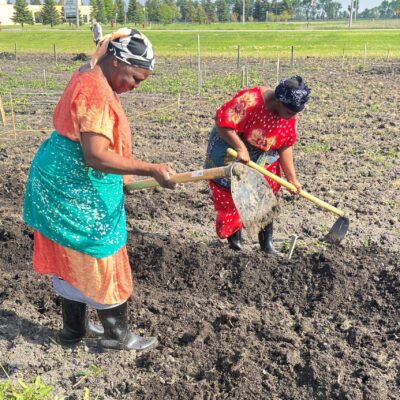
Farmers at work. Photo courtesy of Prairie Rose Agricultural Institute for Research, Innovation & Education.
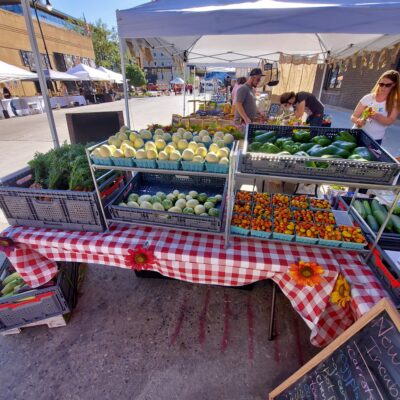
New Roots stand at the Red River Farmer's Market. Photo courtesy of Prairie Rose Agricultural Institute for Research, Innovation & Education.
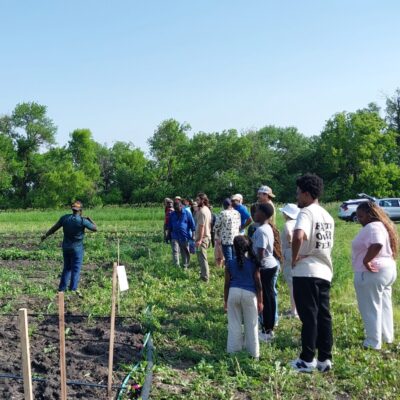
Field Day at New Roots. Photo courtesy of Prairie Rose Agricultural Institute for Research, Innovation & Education.
“The initial learning and experimentation take startup time,” she says. “If you were to rent space in a kitchen, it’s $50 an hour and, often for the recipe experimentation phase, you need technical support, too.” That’s exactly what the incubator will provide because “until they actually get a product and a business plan that allows them to rent space and do processing, it’s a bit of a chicken and an egg thing—you need the resources to get product to get the resources,” Kragnes adds. Beyond simply developing the incubator, PRAIRIE is also creating a “hatching out” fund so that those who develop a product in the incubator can access micro-grants for launching product lines and businesses.
The funding PRAIRE has received for the building renovation has been “the coalescing element that’s strengthened all parts of this work,” Kragnes says.
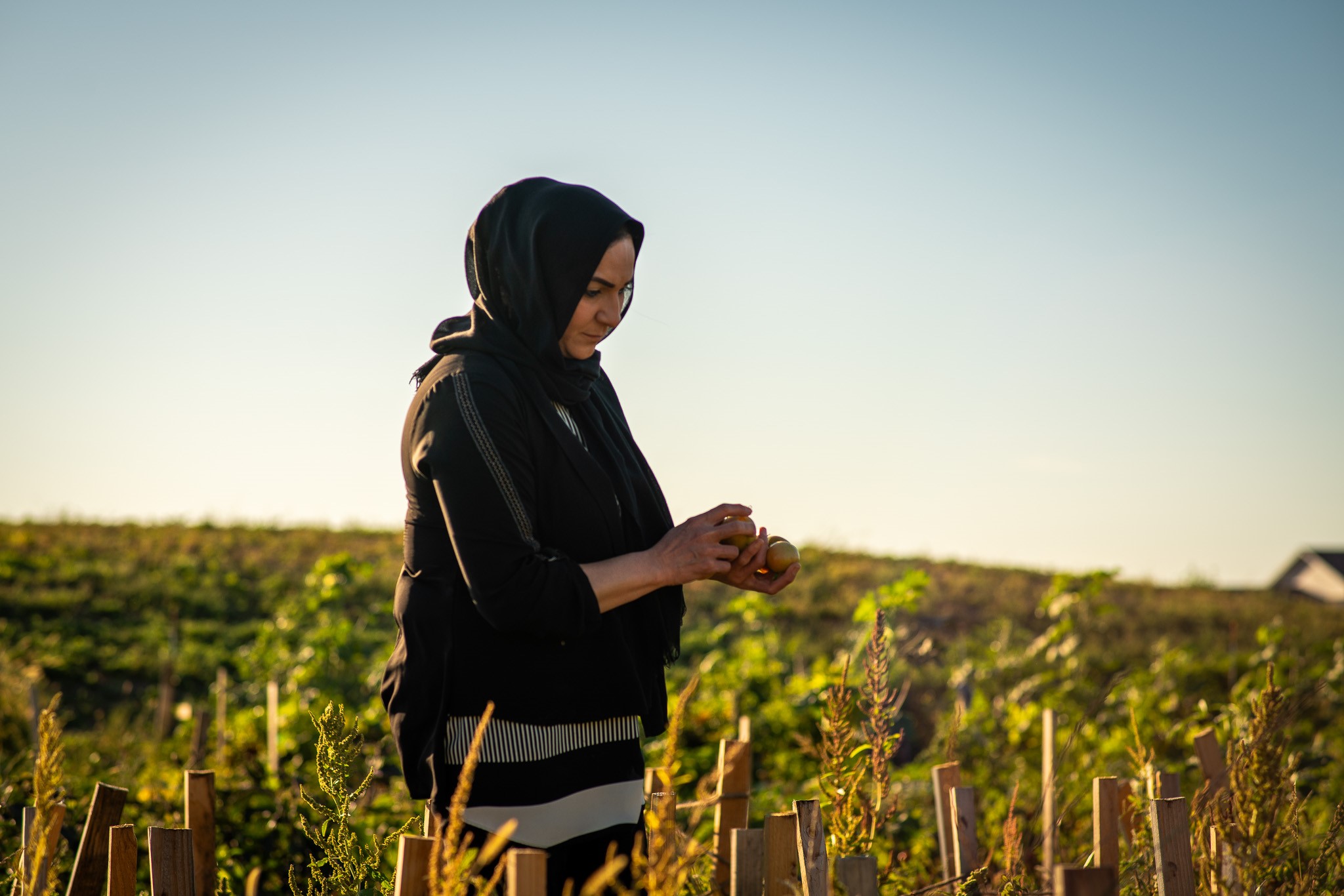
Photo courtesy of Noble.
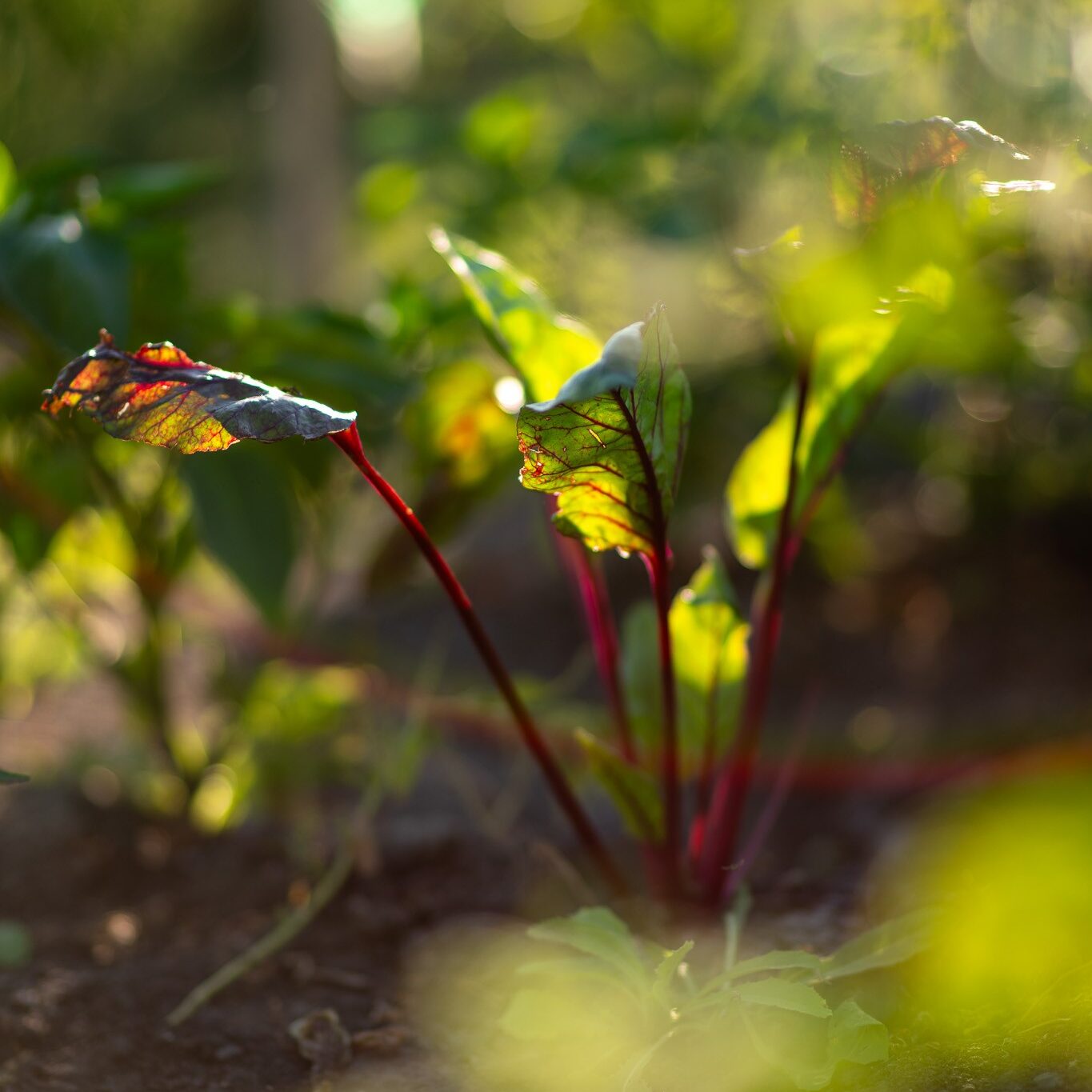
Photo courtesy of Noble.
Caring for the land, too
The work that women farmers do to support each other and their communities also extends to the land. While climate resilience may not be the central focus of the work they’re doing, it’s a natural and inseparable continuation of it.
Exemplified by Thomas’s ahead-of-the-curve transition to organic farming in the ‘90s, these women tend to naturally lean toward more climate-friendly practices in the wide-ranging work they do. Thomas explains it this way: “Women are very holistic about family. They grow stuff they want to eat; stuff they want to feed their family.” And they don’t want to feed their family chemicals.
McCormick agrees. “In food and in climate resilience and adaptation, women leaders in food systems are thinking differently”—in this instance, about how to take the risk of scaling off of individual farmers, she says. The challenge is how to make this happen. For The Good Acre, the answer includes ensuring that there are viable and reliable buyers for farmers. For PRAIRIE Institute, the answer includes exploring and integrating vermiculture (using earthworms to create vermicompost) and traditional composting into their work.
The solutions to the multi-faceted climate crisis will have to be as multifarious as the problem itself. But one thing is clear—women farmers will be essential in addressing it because they already are. By taking care of themselves and their communities, they’re already taking care of the land around them. As long as they keep getting the support they need, they’ll keep creating the new systems we need to build a better future together.